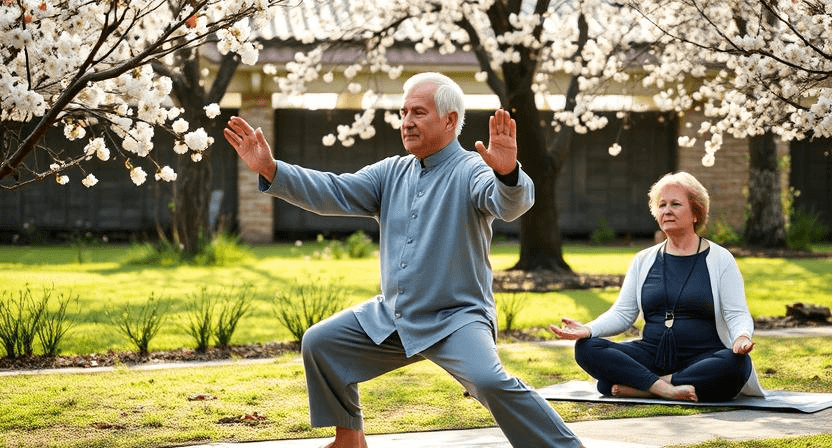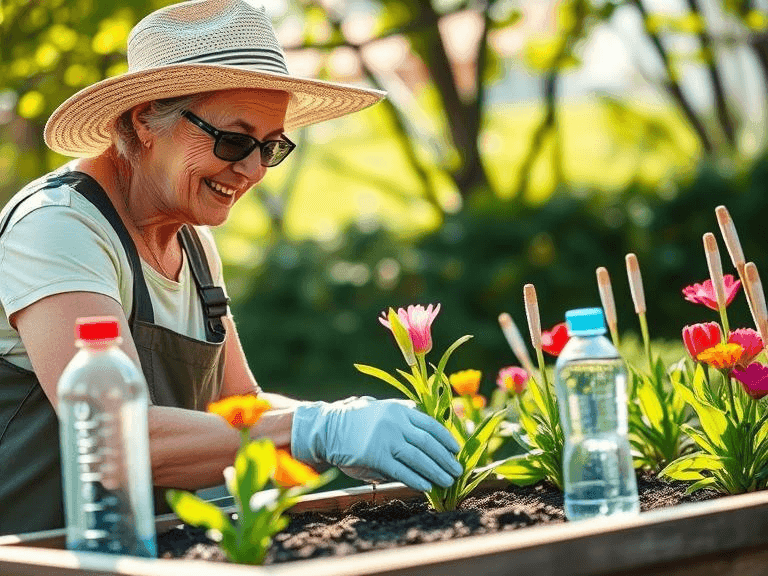The arrival of spring brings with it a sense of renewal and rejuvenation. As the days grow longer and the temperature rises, there’s a natural inclination to emerge from the winter cocoon and embrace the vitality of the season. For seniors, spring offers a perfect opportunity to refresh both body and mind, helping to boost energy levels that may have waned during the colder months.
“Spring reminds us that we too can begin again,” my grandmother once told me as she carefully planted her tomato seedlings, her face alight with the joy of continuing a tradition she’d maintained for over sixty years. Her wisdom rings true – spring invites us all, regardless of age, to reconnect with the world around us and reinvigorate our daily routines.
For older adults, this seasonal transition can be particularly meaningful. Strategic adjustments to activities and nutrition can help seniors harness the natural energy of spring, enhancing both physical health and emotional well-being. Let’s explore how seasonal activities and nutritional shifts can help seniors embrace the renewal that spring brings.

Embracing Outdoor Activities as Temperatures Rise
The warming temperatures of spring create the perfect environment for seniors to safely venture outdoors after potentially spending more time inside during winter months. This seasonal shift presents an excellent opportunity to reestablish regular outdoor activity routines.
The Benefits of Morning Walks
Morning walks offer multiple benefits uniquely suited to seniors in springtime. The early hours provide milder temperatures and softer sunlight, reducing the risk of overheating or excessive sun exposure that might occur later in the day. These walks not only provide gentle cardiovascular exercise but also exposure to natural light, which helps regulate circadian rhythms and improve sleep quality – something many seniors struggle with.
Dr. Elena Martinez, a geriatric specialist I consulted while researching this topic, emphasizes the mood-boosting benefits: “The combination of gentle movement, natural light, and changing scenery during spring walks can significantly improve mood and cognitive function in older adults. I’ve seen patients transform their outlook simply by establishing a 20-minute morning walking routine.”
Consider starting with short 10-15 minute walks and gradually increasing duration as the season progresses. Many seniors find that joining a walking group adds a social component that increases motivation and enjoyment.
Gardening: Exercise with Purpose
Gardening represents one of the most fulfilling spring activities for seniors, combining physical movement, cognitive stimulation, and the satisfaction of nurturing living things. Whether tending to a few potted plants on a balcony or maintaining a larger garden plot, the tasks involved provide gentle stretching, strength building, and fine motor skill practice.
“I started gardening after retirement, and it gives me something to look forward to each day,” shared Robert, a 78-year-old community garden member I met while visiting a senior center. “Planning what to plant, preparing the soil, and watching things grow gives me purpose. And there’s nothing like eating vegetables you’ve grown yourself.”
For those with mobility issues or joint pain, raised garden beds, vertical gardens, or adaptive tools can make gardening more accessible. Many community gardens also offer accessible plots specifically designed for seniors and people with disabilities.
Birdwatching and Nature Photography
Spring brings a flurry of avian activity as migratory birds return and nesting behaviors begin. Birdwatching offers seniors a gentle outdoor activity that can be adjusted to any mobility level. From simply setting up a bird feeder visible from a favorite chair to joining organized birding walks, this activity provides cognitive engagement as seniors learn to identify different species and observe their behaviors.
Photography pairs wonderfully with birdwatching or can stand alone as an engaging spring activity. Modern smartphones have made photography more accessible than ever, removing the need for expensive or complicated equipment. Documenting the changing landscape, emerging flowers, and returning wildlife provides both a creative outlet and a record of seasonal changes that can be shared with family and friends.

Nutrition Shifts for Seasonal Energy
Spring’s abundance of fresh produce creates a natural opportunity to refresh eating habits and embrace nutrients that support increased activity levels. After the heavier comfort foods of winter, transitioning to lighter, more vibrant meals can help seniors feel more energetic and engaged.
Emphasizing Seasonal Produce
The spring harvest brings a wealth of nutrients particularly beneficial for seniors. Leafy greens like spinach, kale, and spring mix are rich in folate, iron, and vitamins that support energy production and cognitive function. Asparagus, another spring staple, contains high levels of folate and is a natural diuretic that can help reduce the fluid retention some seniors experience.
Berries begin appearing in spring as well, offering powerful antioxidants that combat inflammation and support heart health. Strawberries, the earliest of the berry crops, provide vitamin C that aids in collagen production – important for skin, joint, and blood vessel health in seniors.
Creating meals around these seasonal ingredients not only maximizes nutritional benefits but also ensures fresher flavor and often lower costs. Weekly visits to farmers’ markets can become an enjoyable social outing that combines gentle exercise with nutritional planning.
Hydration Strategies for Warmer Weather
As temperatures rise and outdoor activity increases, proper hydration becomes increasingly important for seniors, who may have a diminished sense of thirst. Dehydration can exacerbate many health conditions common in older adults and contributes to fatigue, constipation, and confusion.
“Many of my older patients don’t realize they’re chronically under-hydrated,” explains nutritionist Sarah Williams, whom I interviewed for this article. “Adding spring fruits and herbs to water can make hydration more appealing. Strawberry and mint infused water or cucumber with lemon slices are especially popular with my senior clients.”
Setting regular hydration reminders or establishing routines (like drinking a glass of water before each meal) can help maintain proper fluid intake. Water-rich foods like cucumbers, lettuce, and citrus fruits also contribute to overall hydration while providing valuable nutrients.
Lighter Protein Options
Spring offers an opportunity to shift toward lighter protein sources that align with increased temperatures and activity levels. Fish like salmon and trout are in season during spring in many regions and provide omega-3 fatty acids that support heart and brain health – crucial concerns for seniors.
Plant-based proteins like legumes can be incorporated into spring salads and soups, offering fiber along with protein – a combination that helps regulate blood sugar and supports digestive health. Many seniors find that plant-forward meals leave them feeling energetic rather than sluggish, particularly as temperatures rise.
Mind-Body Practices for Seasonal Transition
The renewal theme of spring extends beyond physical activities and nutrition to encompass practices that nurture mental and emotional well-being. For seniors, incorporating mind-body practices into daily routines can enhance the benefits of seasonal changes.
Outdoor Meditation and Mindfulness
Taking meditation or mindfulness practices outdoors during spring allows seniors to connect with the sensory experience of the season. Simply sitting in a garden or park while focusing attention on the sounds of birds, the scent of blooming flowers, or the feel of a gentle breeze can reduce stress hormones and promote a sense of well-being.
“I started what I call my ‘bench meditation’ last spring,” explains Eleanor, an 83-year-old retiree I met through a senior wellness program. “I found a nice bench in the park near my apartment, and I sit there for 15 minutes each morning, just noticing what’s around me. I’ve seen the same robin building her nest over several weeks. Watching the world wake up each day gives me such peace.”
This type of nature-based mindfulness requires no special equipment or training, making it accessible to seniors of all ability levels. The practice supports cognitive function, reduces anxiety, and helps maintain present-moment awareness – a skill that enhances enjoyment of daily activities.

Modified Outdoor Yoga and Tai Chi
Spring weather creates ideal conditions for moving traditional indoor exercises like yoga and tai chi into outdoor settings. Many senior centers and community organizations offer outdoor classes specifically designed for older adults during spring months.
These practices combine gentle movement with breath awareness, creating a synergistic effect that improves balance, flexibility, and mental focus. For seniors concerned about falls, these structured movement practices have been shown to increase confidence and reduce fall risk.
Participating in group classes adds a valuable social component, but seniors can also practice modified movements at home using online videos specifically designed for older adults. Even simple seated yoga poses or tai chi hand movements can provide meaningful benefits when practiced regularly.
Creating Sustainable Spring Routines
While the renewal energy of spring provides motivation for change, the key to lasting benefits lies in creating sustainable routines that can be maintained throughout the season and beyond.
Starting Small and Building Gradually
For seniors who have been less active during winter months, it’s important to begin new activities gradually to prevent injury and discouragement. Starting with just 10 minutes of gardening or a short walk around the block establishes a foundation that can be built upon as strength and endurance improve.
Setting realistic expectations helps maintain motivation even on days when energy might be lower. Consistency matters more than duration or intensity, particularly when establishing new habits. A daily five-minute stretching routine will provide more benefits than an occasional hour-long session followed by days of inactivity.
Incorporating Social Elements
Activities that combine physical benefits with social interaction tend to be more sustainable for seniors. Walking with a friend, joining a community garden, or participating in group exercise classes provides accountability and makes the activities more enjoyable.
“The Tuesday morning bird walks saved me after my husband passed,” confides Jean, a 76-year-old widow I met while researching senior community programs. “At first, I came just to have somewhere to be, but now I’ve made friends and learned so much about nature. We keep each other going, even when someone doesn’t feel their best.”
Local senior centers, libraries, and parks departments often offer free or low-cost spring activities specifically designed for older adults, providing structured opportunities to combine physical activity with social connection.
Adapting to Weather Variations
Spring weather can be unpredictable, with beautiful sunny days interrupted by rain showers or occasional temperature drops. Having indoor alternatives planned for outdoor activities helps maintain consistency despite weather changes.
Chair exercises, indoor gardening projects, or nature documentary viewing with follow-up discussions can keep the spring renewal theme alive even on inclement days. These backup plans reduce the likelihood that a few rainy days will derail newly established routines.
Conclusion: Embracing the Season of Renewal
Spring offers seniors a natural opportunity to refresh routines, boost energy levels, and reconnect with the world around them. By thoughtfully incorporating seasonal activities, nutritional shifts, and mind-body practices, older adults can harness the renewing energy of spring to enhance both physical health and emotional well-being.
As with any lifestyle changes, consulting healthcare providers before beginning new activities or making significant dietary shifts is advisable, particularly for seniors with existing health conditions. However, even small adjustments aligned with the season can yield meaningful benefits.
The renewal that spring brings isn’t limited by age – in fact, the wisdom and life experience that seniors bring to seasonal activities often allows for a deeper appreciation of the cycles of nature and the possibilities for continual growth and revitalization throughout life’s journey.





